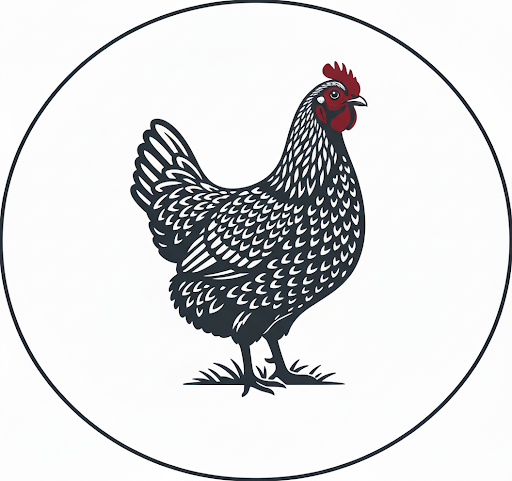Cluckin' about curves: What chicken keepers mean by 'shape' and why it is so important.
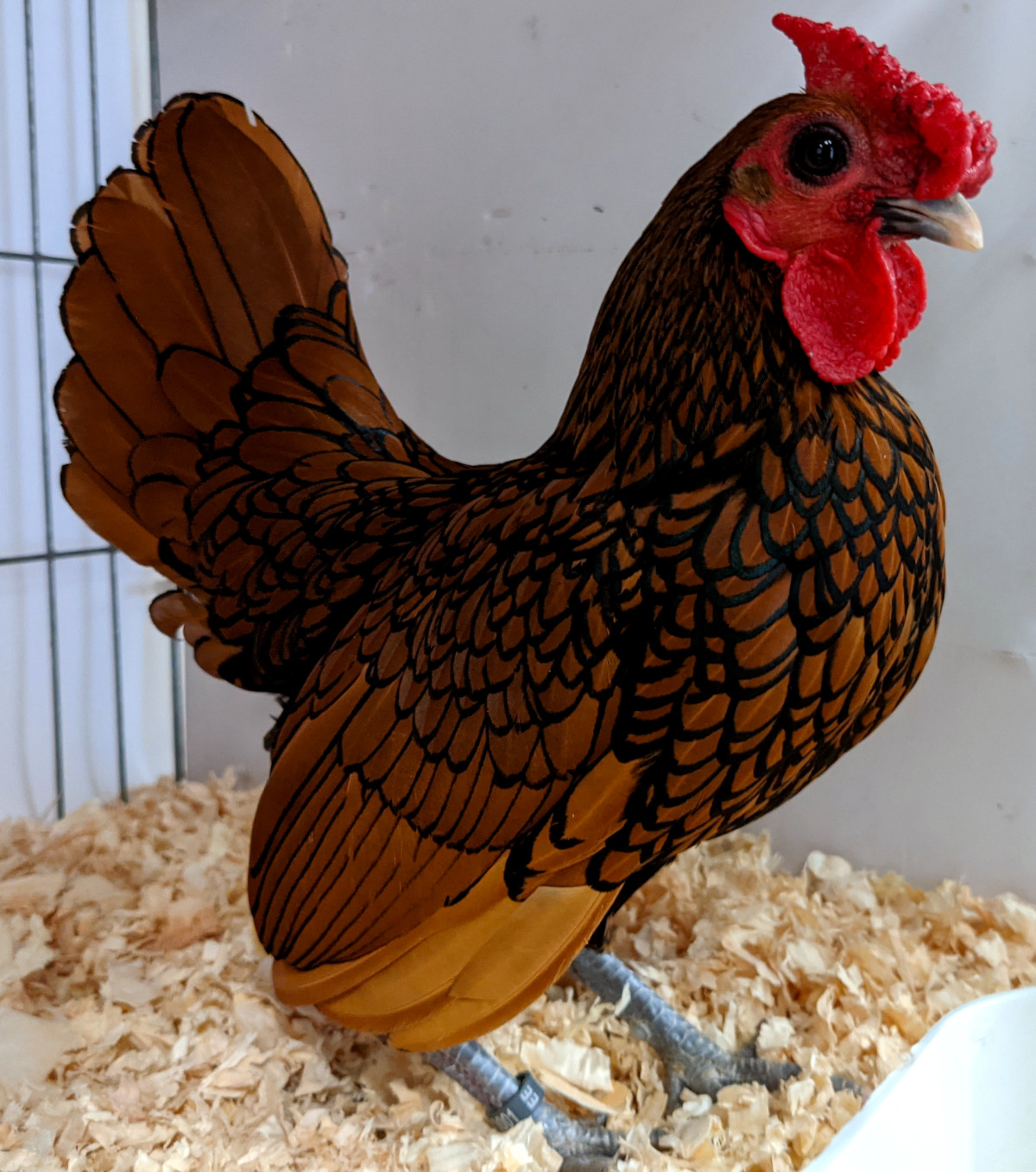
Shape means two things to a chicken keeper.
Firstly there is the actual physical shape of the bird and secondly the metaphysical which is more about the bird’s proportions, posture, attitude and condition. I am going to be covering both sides of the 'shape' of chickens here with breed examples.
Chickens have a rounded, squat appearance, with variations in size and shape depending on the breed. They are generally characterised by short wings, a smaller head, and a relatively large body mass for their size.
Below: A chicken in shape. Good contours for the breed and excellent condition and carriage.
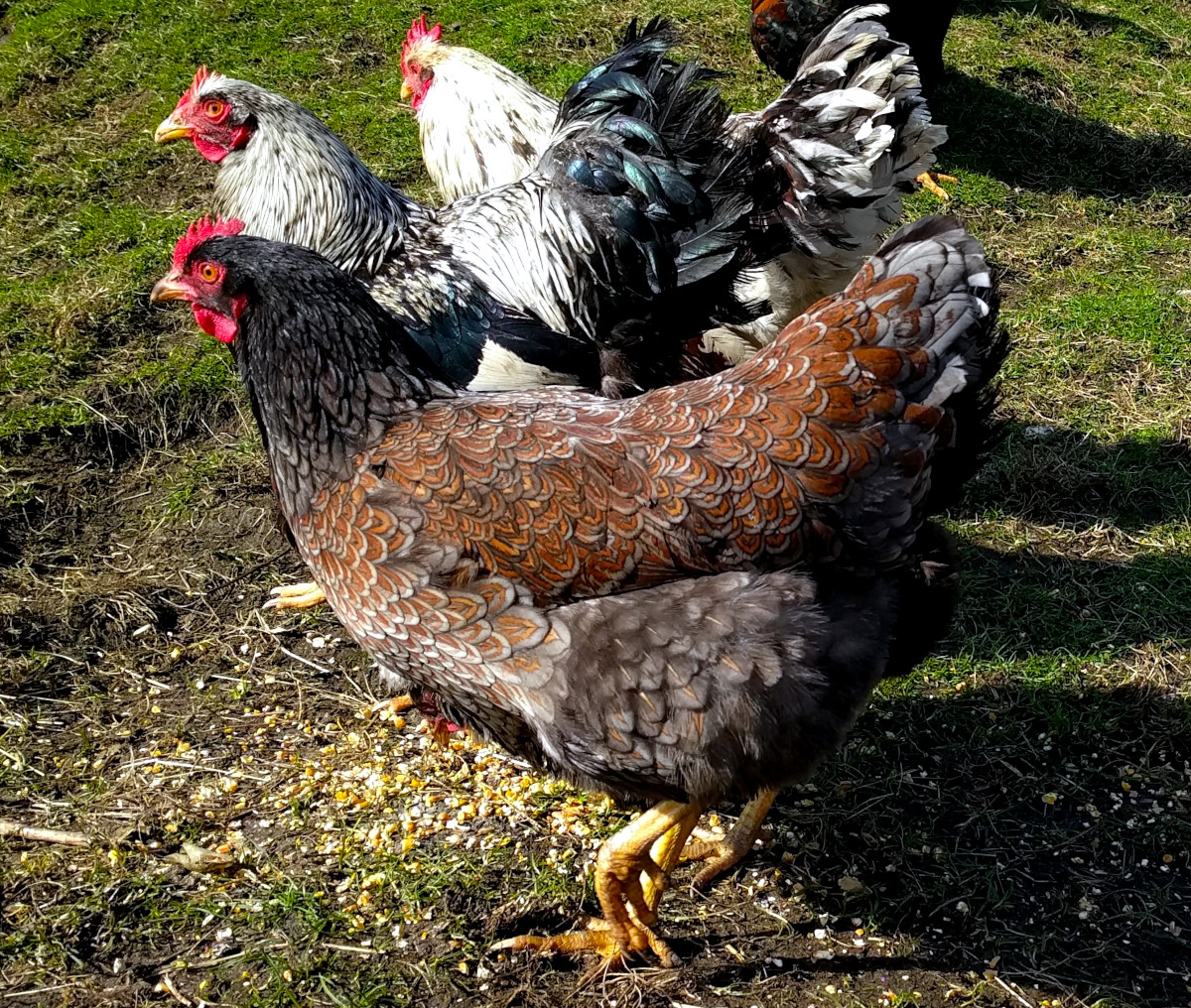
Chicken shape refers to a chicken’s body structure. Poultry fanciers judge shape based on breed standards. These standards, set by organisations like the American Poultry Association, describe the ideal look for each breed.
Actual chicken shapes:
Simply put: Shape refers to the chicken's overall silhouette or outline. And shape is not just for show birds!
Historically the 'shape' of a chicken reflected its usage, The egg shaped, upright or light Mediterranean breeds were they prolific white egg layers, the 'Square' chickens were primarily meat birds and the 'Boat shaped' birds were the dual purpose types.
Good shape often means good health. A chicken with a strong frame is less likely to have issues.
Below: A poultry judge assessing the shape of the bird.
Poultry fanciers aren’t just nitpicking. Shape reflects a chicken’s purpose and quality. In the world of fanciers and breeders, "shape" means something very specific, but confusingly a little intangible as well.
The square shaped chickens:
I can still remember the look I got a few years ago when I described a show winning Orpington as square in shape. The young lad in question thinking I had lost my mind, surely chickens are chicken shaped?
These were historically large, slow growing birds that produces a fully fleshed carcass and were kept for meat. They tend to have deep, broad bodies – a blocky shape indicating a good meat yield.
Below: What chicken keepers mean by a square shaped chicken.
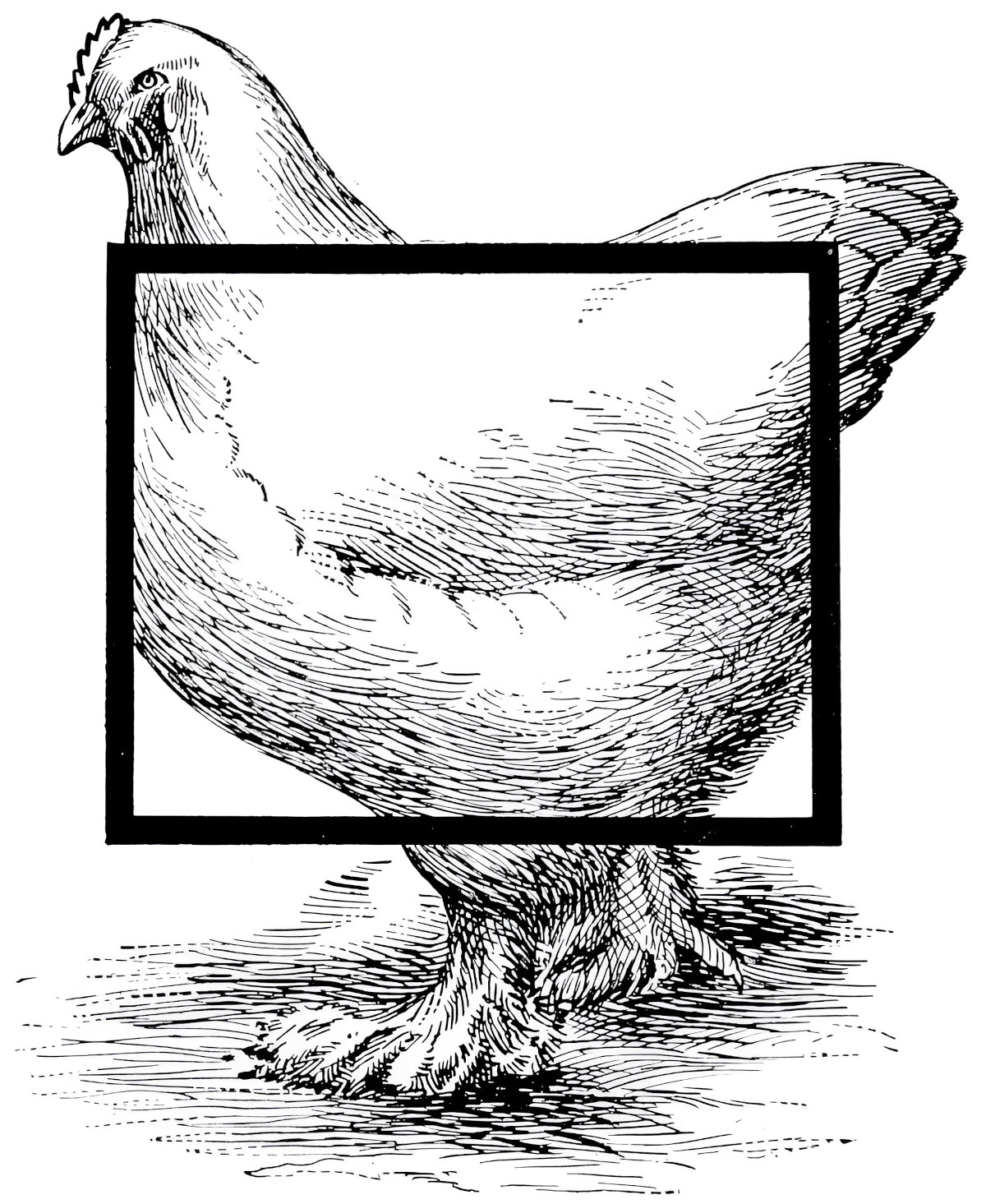
Square shaped chicken breed examples: Orpington, Cochin, Brahma.
Below: you can see how Cochins got to be classified as 'square'.
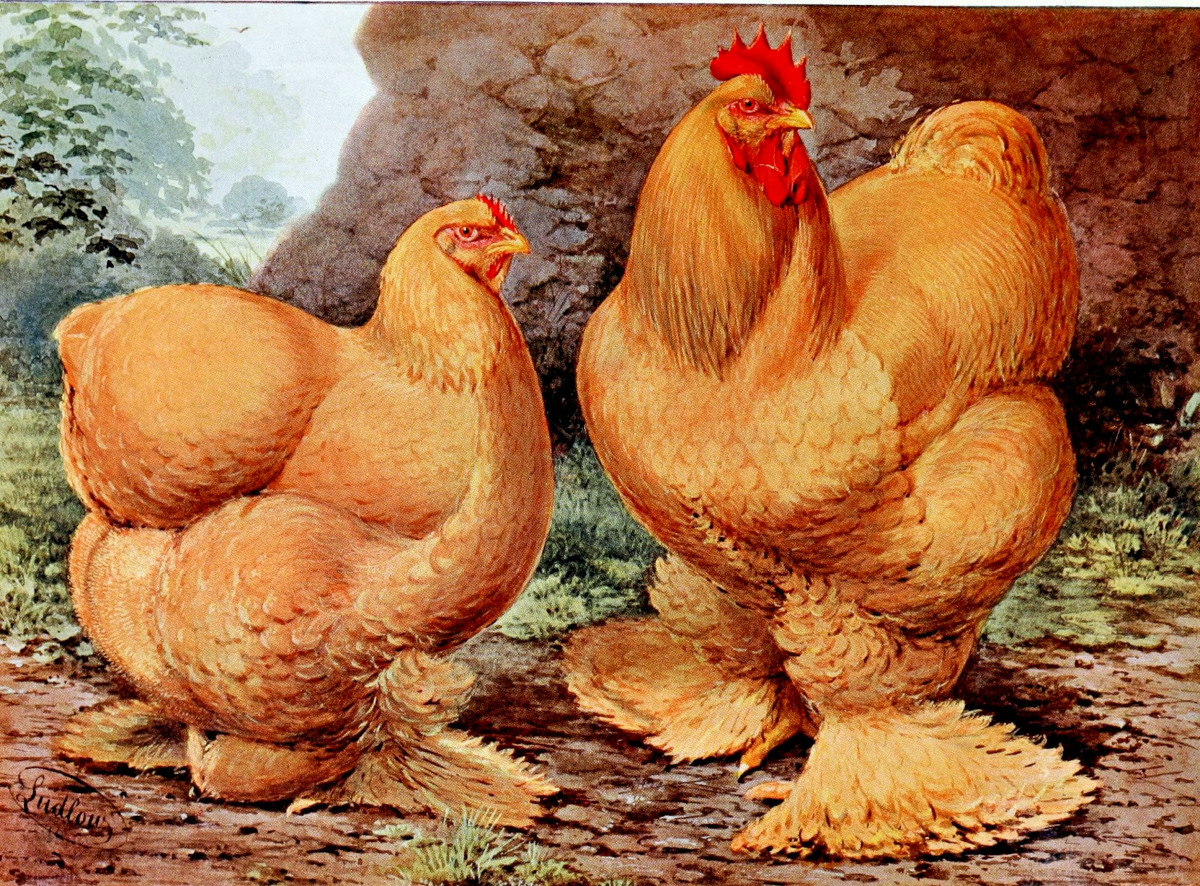
Shape is one of the primary ways to distinguish between breeds. A fluffy, round Orpington has a vastly different shape from a sleek, upright Leghorn. Maintaining the correct shape helps preserve the unique characteristics of each breed.
The Boat shaped chickens:
These are generally the dual purpose chickens that have a rounded underneath like a boat. My Barnevelders and Light Sussex fit into this category. These chickens have a well-balanced shape, indicating traits for both meat and egg production – not too blocky, not too slender.
Below: The boat shape explained.
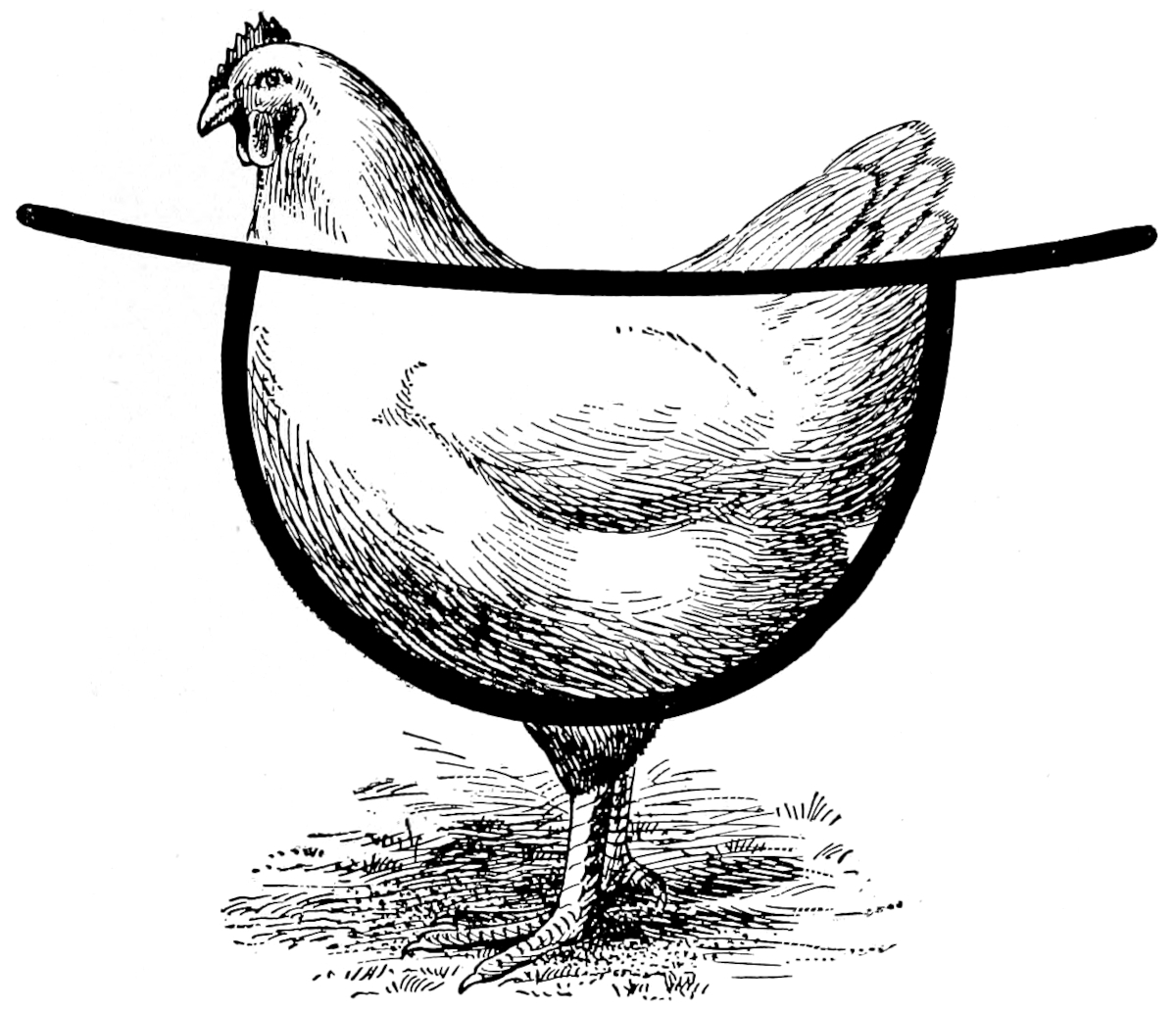
Shape matters because it shows whether a bird meets its breed standard. And breed standards are more than just old-fashioned rules. They preserve the genetic identity of the breed. Without attention to shape, we risk losing what makes each breed special.
Below: A classic boat shaped hen - the Barnevelder.
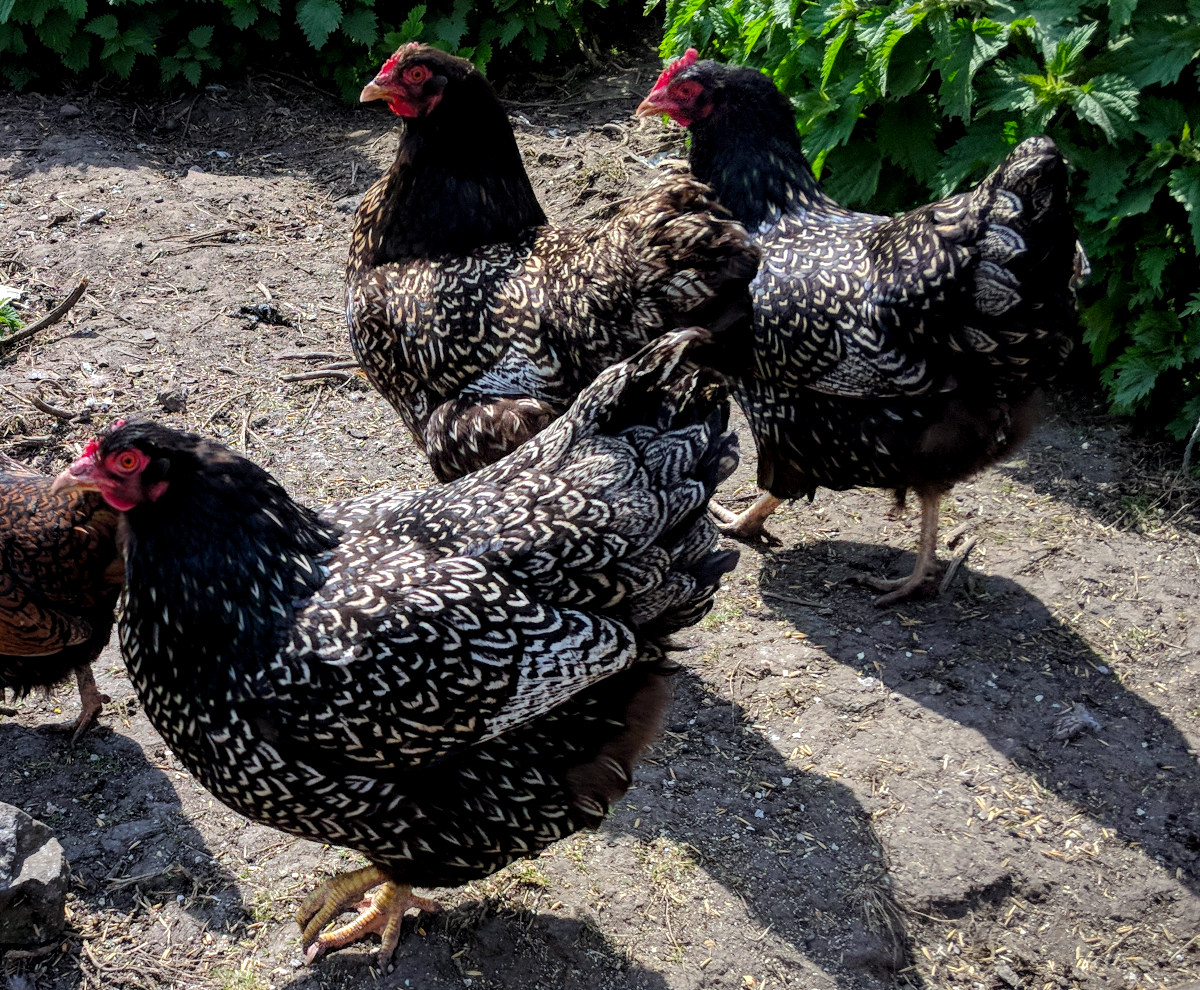
The egg shaped or upright chickens:
Sometimes also known as 'light' chickens these are generally the Mediterranean white egg layers or the breeds that are descended from them.
These fowl often have more slender, streamlined bodies with higher tail carriage – an 'active' shape suggesting less energy going into bulk and more into egg production.
Below: Egg shaped chickens explained.
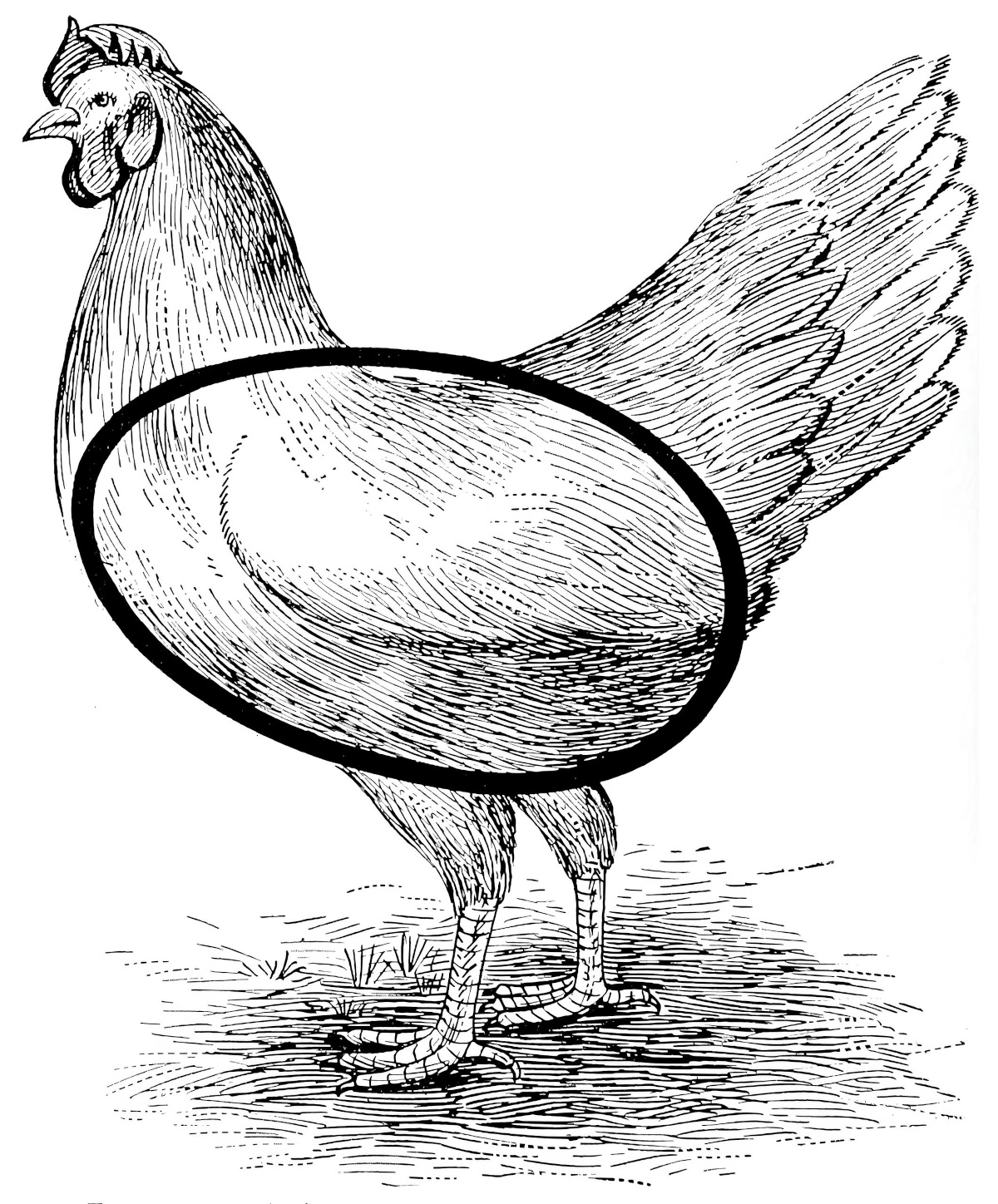
The body should match the breed’s ideal silhouette. For instance, a Leghorn has a sleek, wedge-shaped body. I once saw a Leghorn at a show that was so perfectly tapered, it looked like it was sculpted.
Below: This is an Ancona, a light upright egg shaped breed with a textbook shape. Too boxy or too round? Points off.
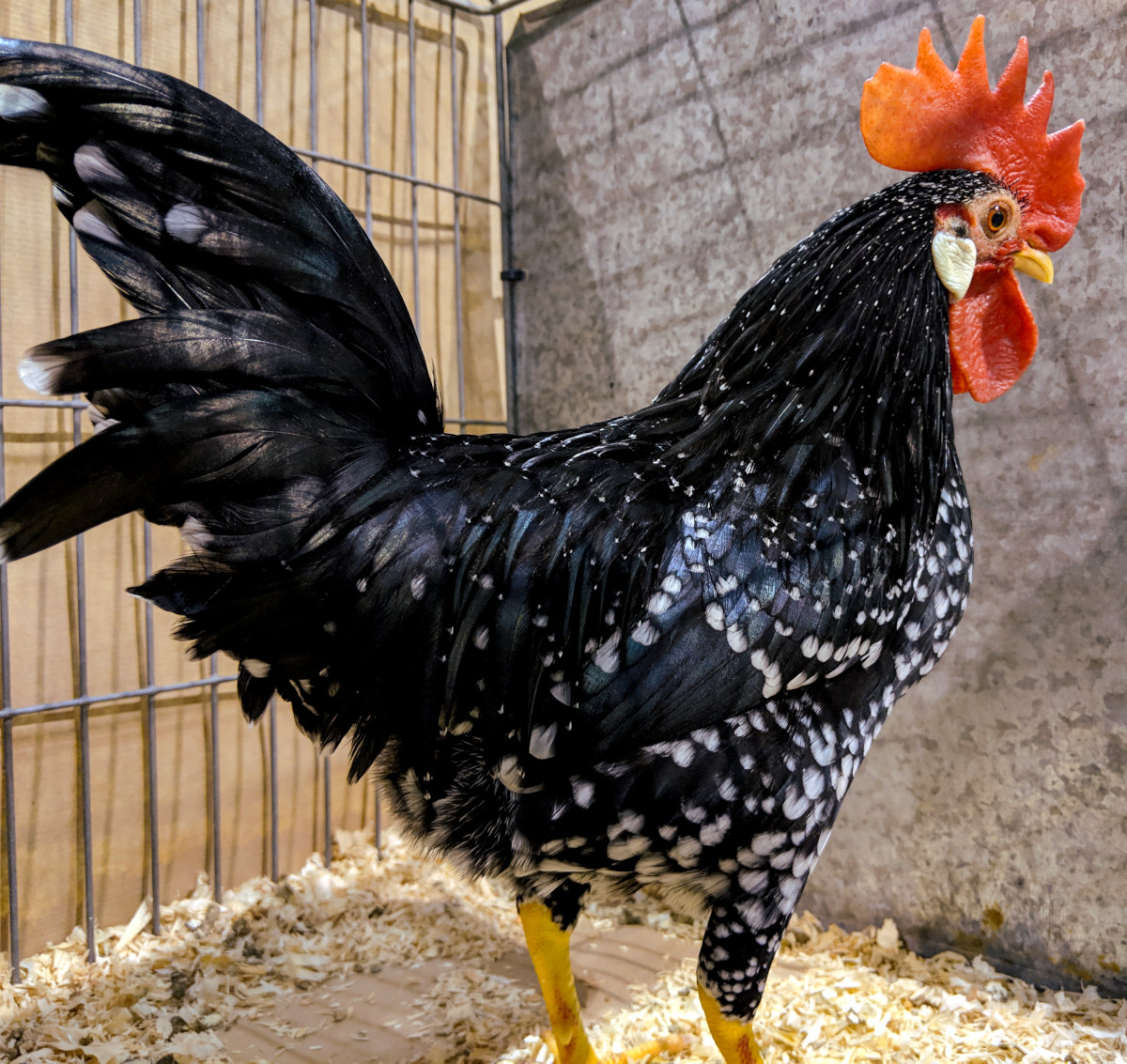
Shape affects performance. A layer with a deep, wide body lays better and a meat bird with a broad chest yields more.
Shape includes:
When I mention shape, I am referring to the overall body structure as seen from the side, front, and above. It’s the bird’s frame, not just its feathers.
- The angle and length of the back
- The depth and breadth of the body
- The carriage (how the bird holds itself)
- The tail angle
- The placement of wings
- The set of the legs
- How symmetrical the chicken is about its centre line
Each breed has its own ideal shape, written down in official breed standards. For example, a Barnevelder should look broad and deep, with a slightly U-shaped back and a full tail—not too high, not too low. A Leghorn, by contrast, should look athletic and upright, with a longer tail and a more angular frame.
Even if you’re not planning to exhibit your chickens, shape still matters. A well-shaped bird is usually a healthy one. Good body depth can mean better egg-laying. Proper leg position can help avoid joint problems. Plus, there’s something satisfying about seeing a flock that just looks right.
Below: Incorrect and correct leg position in chickens and how it affects shape:
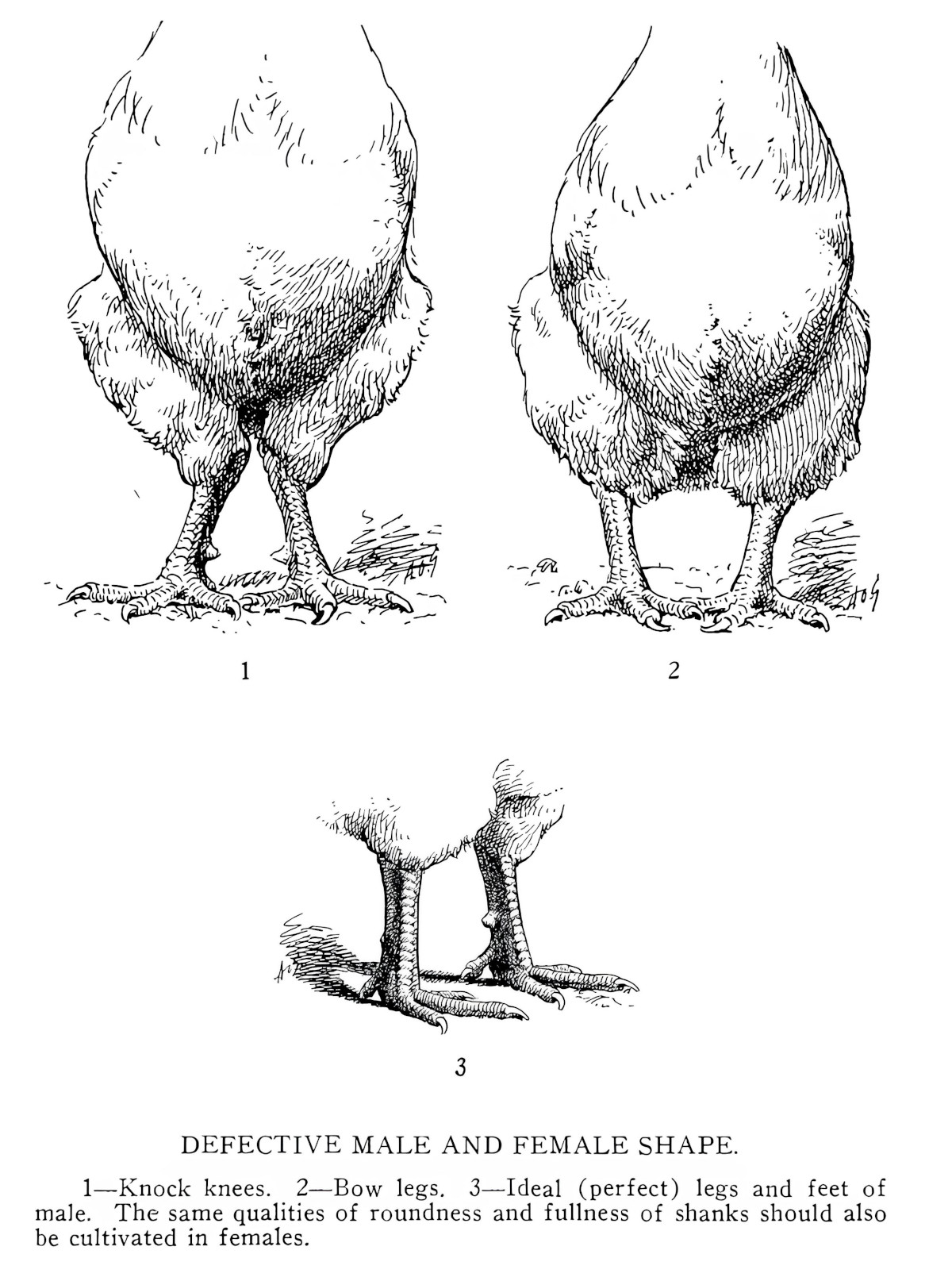
So when us poultry fanatics talks about a bird’s shape, we’re speaking a kind of shorthand. It tells you whether the bird is healthy, true to its breed, and well-cared-for. It’s not about beauty in the Instagram sense—it’s about balance, utility, and tradition.
